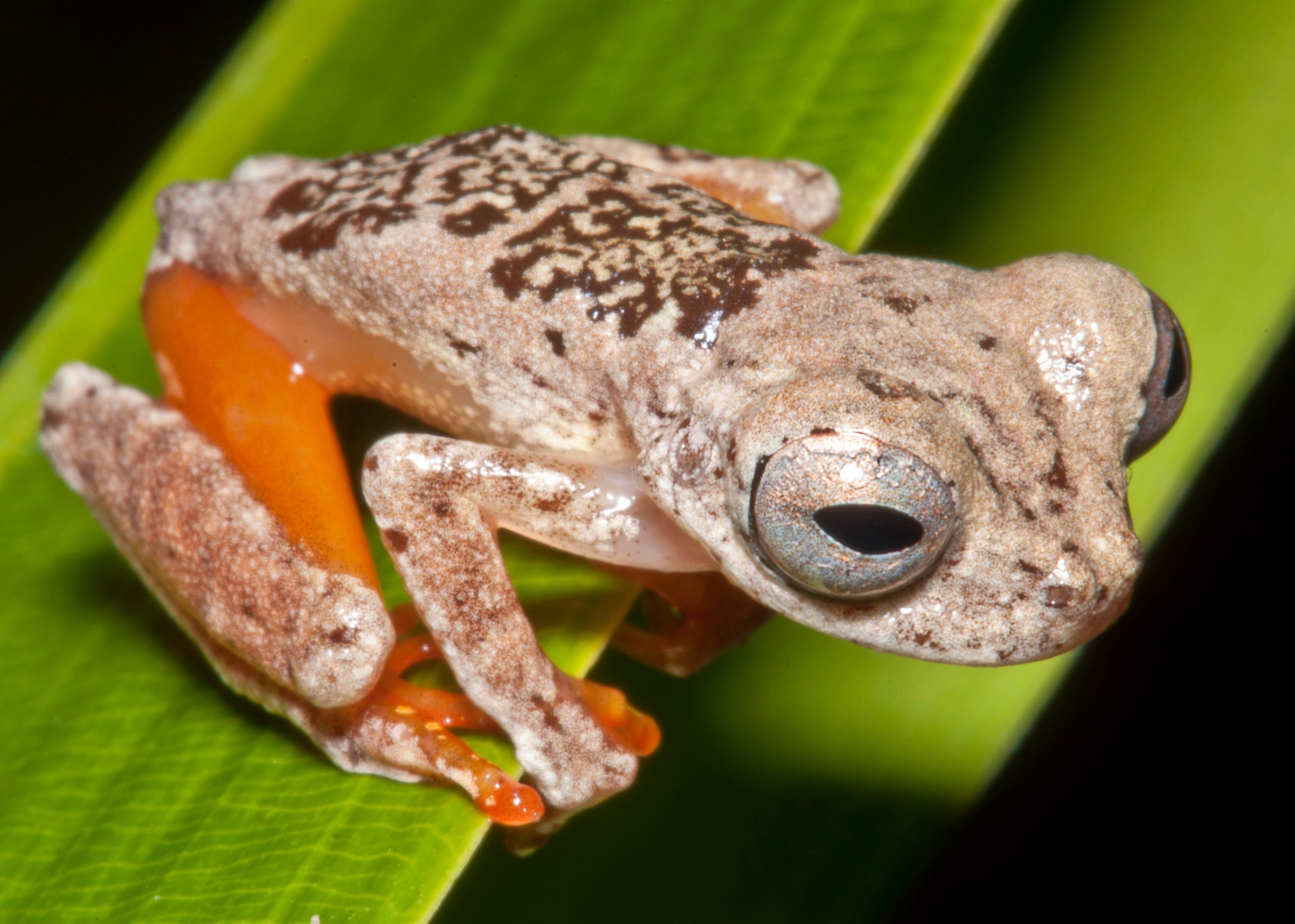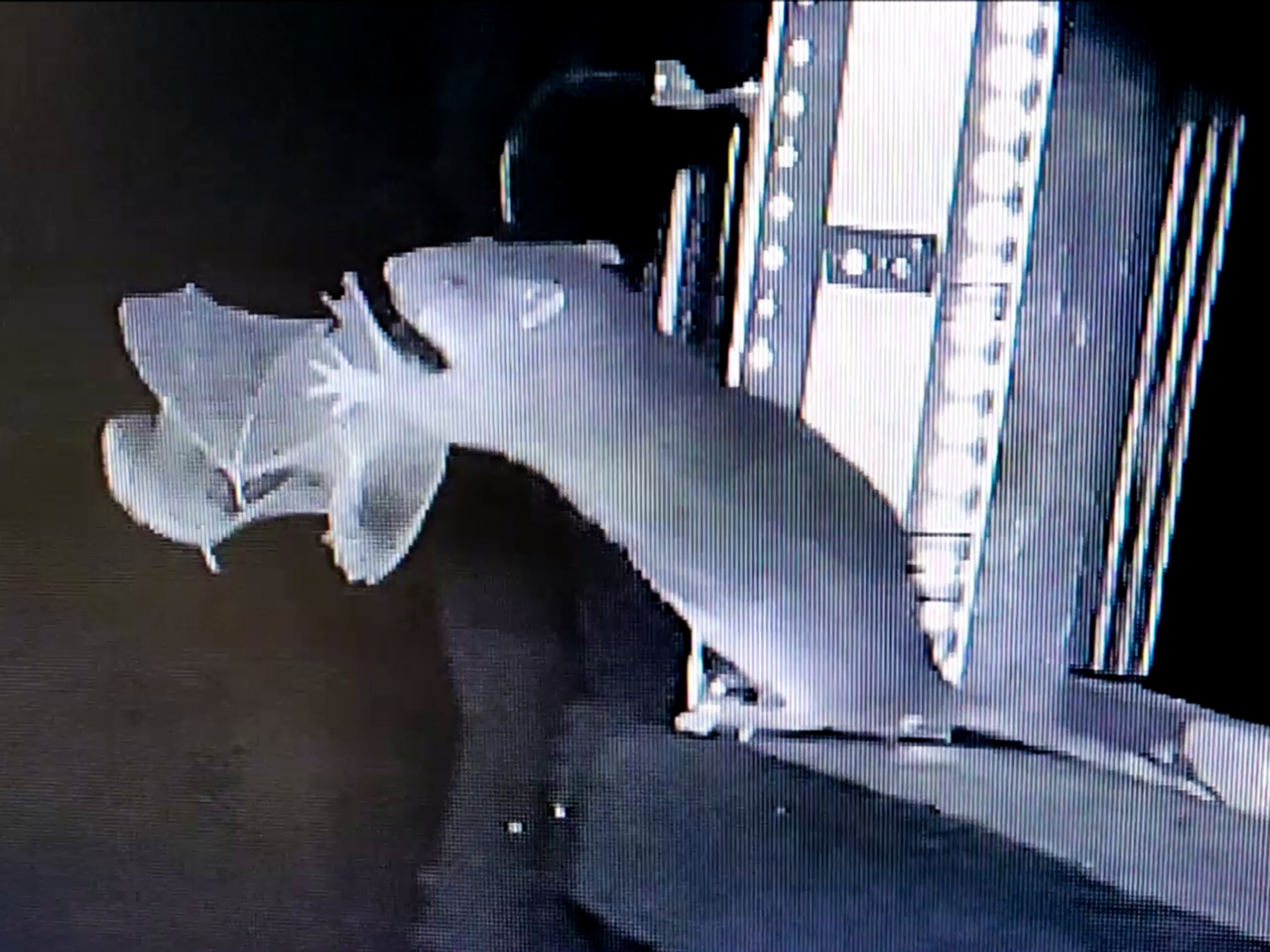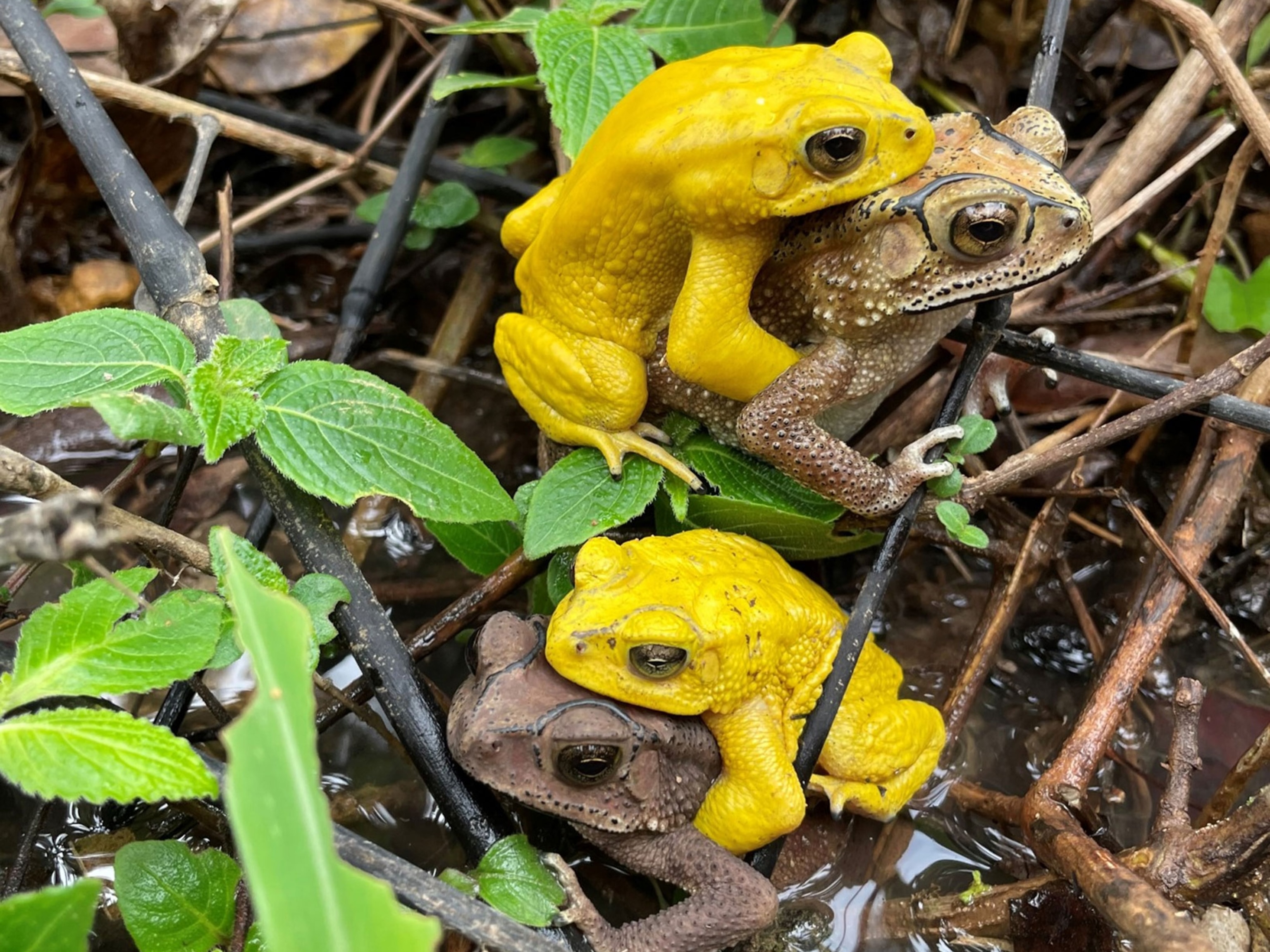
New "Bat Frog" Found in Amazon, Named for Ozzy Osbourne
Dendropsophus ozzyi males make high-pitched, batlike calls.
Holy Batfrog! Scientists have discovered a new tree frog species with a shrill, batlike call in the Brazilian Amazon.
"As soon as I heard its call, I knew it was a new species. I had never heard anything like it," said Pedro Peloso, one of the frog's discoverers and a postdoctoral fellow at Museu Paraense Emílio Goeldi, Brazil.
Peloso and colleagues found the 0.75-inch (19.4-millimeter) amphibian in 2009 as part of a biodiversity survey of Floresta Nacional de Pau-Rosa, a protected area in the state of Amazonas (map).
During the month-long expedition, the team found 21 specimens of the brown-and-orange creature, which has mysteriously long, delicate fingers and toes. (Read about tree frogs in National Geographic magazine.)
The male frogs also have an unusually large vocal sac, a nearly transparent piece of skin that inflates to produce its unique high-pitched chirping sound. Male tree frogs in general make loud calls to communicate with females in distant treetops, but the new species is the first known to sound like a bat.
Once the team had brought their treasure back to the lab, "we kept talking about the 'bat frog,' which led to us talking about being fans of Ozzy Osbourne and Black Sabbath," Peloso said.
At a concert in 1981, Osbourne bit the head off a bat that a fan threw on the stage, although Osbourne later said he believed it was rubber. Peloso named his bat frog Dendropsophus ozzyi, and it's described November 6 in the journal Zootaxa.

Easy to Miss
During the 2009 expedition, Peloso and colleagues traveled up the Amazon by boat, sleeping in hammocks and collecting everything they could find. (See more tree frog pictures.)
Peloso's collection technique was remarkably low-tech: He carried only a plastic bag, a flashlight, and a digital audio recorder to capture the sounds made by the species he collected.
This strategy paid off: He found the new frog in three different areas of the Brazilian Amazon.
Since the locations were so far apart, and travel between them difficult, Peloso believes the frog is widely distributed in the Amazon and is not in immediate danger of extinction.
Despite the fact that the frog is likely common, he's not surprised no one had found it before. (Also see "Surprising Photo: Toad Eats Bat.")
"To find a species, it's a matter of being in the right place at the right time. If the conditions aren't right, it's really easy to miss them," Peloso said.
Even so, the fact that a new species was discovered in a relatively well-studied area of the Amazon further highlights the tremendous biodiversity of the area, said José Padial, an assistant curator at the Carnegie Natural History Museum in Pittsburgh who wasn't involved in the study.
"The work was very, very thorough and represents just how little we know about life in the Amazon," Padrial said.





